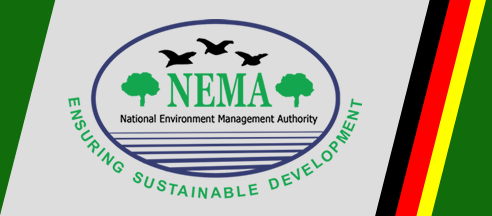How to
Conduct an Environmental and Social Impact Assessment (ESIA)
In Uganda, conducting an Environmental and Social Impact Assessment (ESIA) follows a structured process mandated by the National Environment Act of 2019 and its associated regulations. Here’s a general outline of the process:
Project Identification: The first step involves identifying the project or activity that requires an ESIA. This could include infrastructure projects, industrial activities, agriculture projects, or any other development likely to have a significant impact on the environment.
Scoping: Once the project is identified, the proponent (the entity proposing the project) submits a project brief to the NEMA for scoping. Scoping involves identifying the potential environmental and social impacts that need to be assessed in detail during the ESIA process.
Baseline Data Collection: This stage involves gathering baseline data on the environmental, social and economic conditions of the project area. This data provides a basis for comparing the conditions before and after the project implementation.
Impact Assessment: With the baseline data in hand, the proponent conducts an assessment of the potential environmental and social impacts of the proposed project. This assessment should cover a range of factors, including air and water quality, biodiversity, land use, socio-economic conditions, and cultural heritage.
Public Consultation: Public participation is a crucial aspect of the ESIA process. The proponent is required to consult with affected communities, stakeholders, and the general public to gather feedback on the project and its potential impacts. NEMA often facilitates public consultations to ensure transparency and inclusivity.
Preparation of the ESIA Report: Based on the scoping, baseline data collection, impact assessment, and public consultation feedback, the proponent prepares a comprehensive ESIA report. This report should document all aspects of the project and its potential impacts, as well as proposed mitigation measures.
Review and Approval: The ESIA report is submitted to NEMA for review. NEMA assesses the report to ensure that all necessary information has been provided and that the potential impacts have been adequately addressed. If the report meets the requirements, NEMA grants approval for the project to proceed. In some cases, NEMA may request additional information or revisions before granting approval.
Implementation and Monitoring: Once approval is granted, the proponent can proceed with implementing the project, incorporating the mitigation measures outlined in the ESIA report. NEMA conducts regular monitoring to ensure compliance with environmental regulations and the effectiveness of mitigation measures.
Post-Project Evaluation: After the project is completed, a post-project evaluation may be conducted to assess the actual environmental and social impacts compared to those predicted in the ESIA report. This evaluation helps improve the effectiveness of future ESIAs and project planning. Throughout the process, NEMA plays a key role in providing guidance, oversight, and regulatory enforcement to ensure that EIAs are conducted effectively and that proposed projects are environmentally sustainable
Conducting environmental audit
Conducting environmental audits in Uganda involves a systematic process of evaluating an organization’s compliance with environmental regulations and assessing its environmental performance. Below is the general outline of how to conduct environmental audits in the country.
Establish Objectives: Define the objectives of the environmental audit. Determine what aspects of the organization’s operations and activities will be assessed, such as, waste management, pollution control, resource use, or compliance with specific environmental regulations.
Select Audit Team: Form an audit team consisting of individuals with expertise in environmental management, regulatory compliance, and auditing techniques. This team may include internal staff members or external consultants.
Pre-Audit Preparation: Before conducting the audit, review relevant environmental laws, regulations, and standards applicable in Uganda. Familiarize yourself with the organization’s environmental management system (if any), operational procedures, and previous audit reports.
Develop Audit Plan: Develop a detailed audit plan outlining the scope, objectives, methodology, and schedule of the audit. Identify the specific areas and processes within the organization to be audited, as well as the criteria against which compliance and performance will be assessed.
Conduct On-Site Audit: Conduct on-site inspections and interviews to gather information and evidence related to environmental performance and compliance. Evaluate the organization’s facilities, processes, procedures, and records to identify potential environmental risks, non-compliance issues, and areas for improvement.
Document Findings: Document your findings, observations, and evidence gathered during the audit. Clearly identify any non-compliance issues, deficiencies, or areas of concern, as well as any positive practices or areas of good environmental performance.
Assess Compliance: Assess the organization’s compliance with applicable environmental laws, regulations, permits, and standards. Determine whether the organization’s activities are being conducted in accordance with legal requirements and established environmental management practices.
Evaluate Environmental Performance: Evaluate the organization’s environmental performance in terms of resource efficiency, pollution prevention, waste management, emissions reduction, and environmental stewardship. Identify opportunities for improvement and best practices that can be adopted.
Report and Recommendations: Prepare an audit report summarizing the findings, conclusions, and recommendations of the audit. Clearly communicate any non-compliance issues, areas of improvement, and corrective actions needed to address identified deficiencies. Provide practical recommendations for enhancing environmental performance and achieving regulatory compliance.
Follow-Up and Monitoring: Monitor the implementation of corrective actions and follow-up on recommendations provided in the audit report. Track progress over time and conduct follow-up audits as necessary to verify compliance and assess improvements in environmental performance.
Continuous Improvement: Encourage the organization to integrate environmental auditing into its management systems and practices on a regular basis. Promote a culture of continuous improvement and environmental responsibility to drive long-term sustainability.

